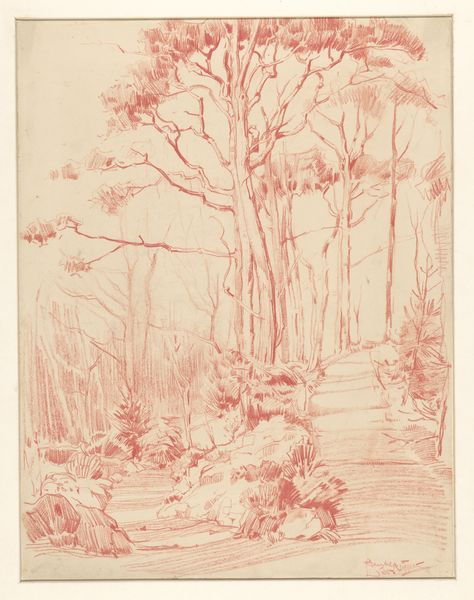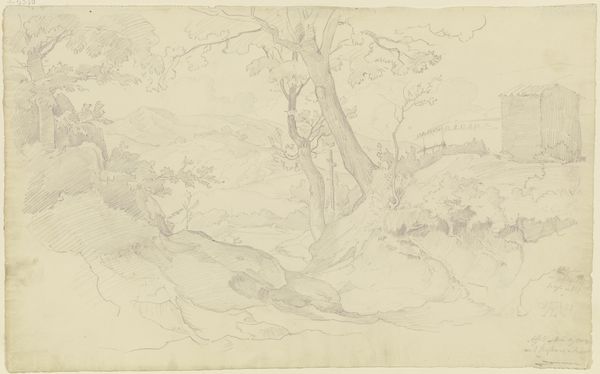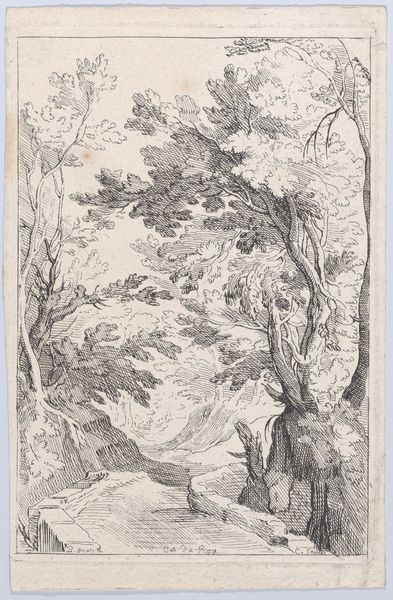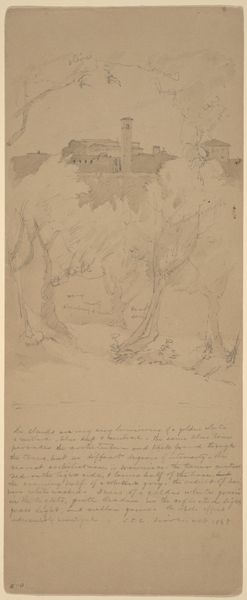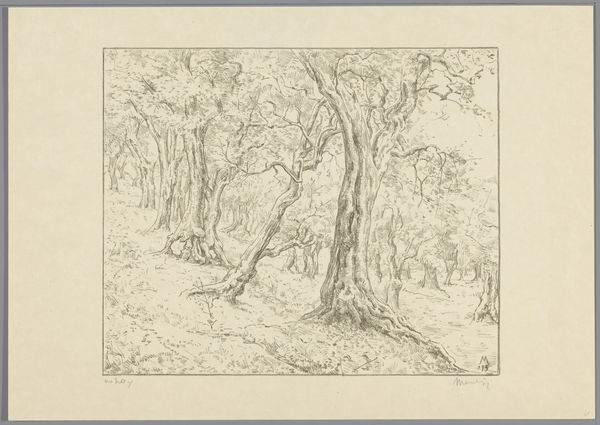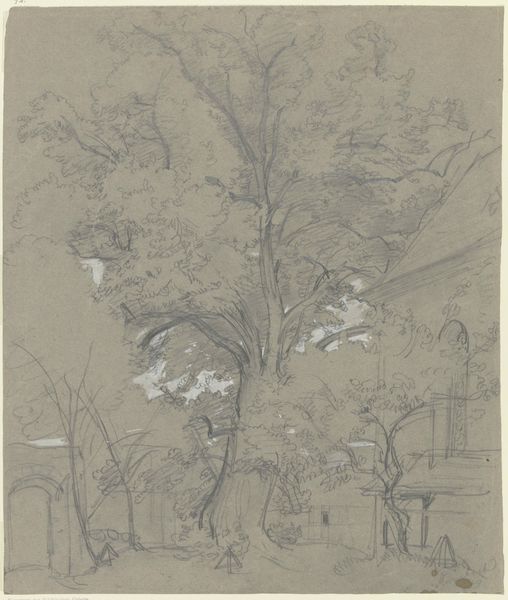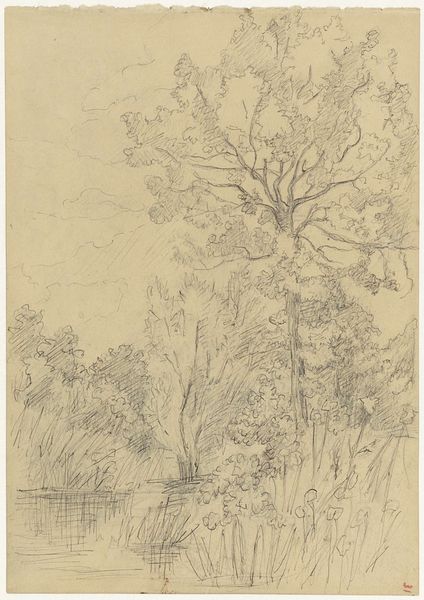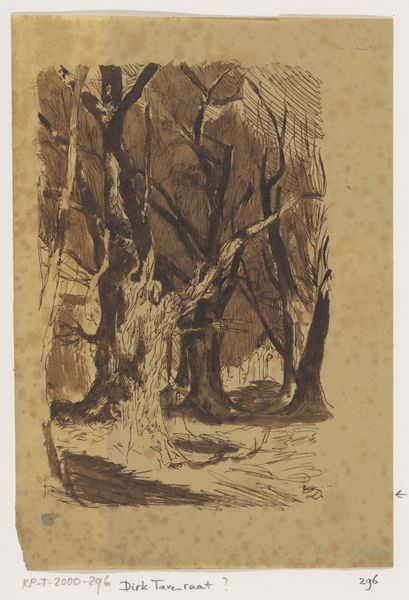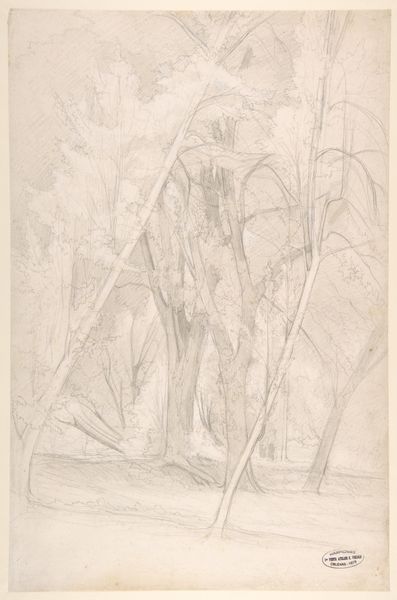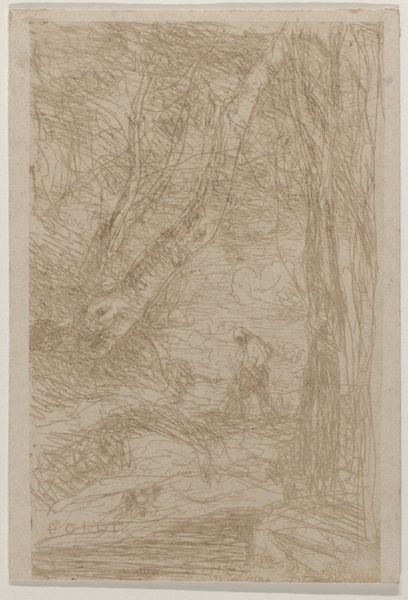
drawing, pencil, graphite
#
drawing
#
landscape
#
romanticism
#
pencil
#
graphite
#
academic-art
Dimensions: Sheet: 14 3/8 x 10 13/16 in. (36.5 x 27.4cm)
Copyright: Public Domain
Curator: Edouard Bertin’s pencil and graphite drawing, "Trees in a Forest," from sometime between 1800 and 1880, invites us into a secluded woodland space. It now resides at the Metropolitan Museum of Art. What’s your initial reaction to this monochrome study? Editor: It has a quiet, almost melancholy feel to it. The light is soft, like late afternoon, and the composition draws your eye back into the trees—there's a sense of retreat, perhaps? But, beyond that, it speaks of materials, of course. Curator: Indeed, this really is academic art pared back to its barest essentials! Graphite on paper can reveal so much; that Romantic spirit, rendered so meticulously, becomes palpable. To consider Bertin working in nature, graphite stick in hand, carefully capturing the specific way the bark grows and twists…it’s mesmerizing. Editor: Exactly, the labor of seeing and translating is so clear here! Bertin likely used varied graphite hardness to achieve these tonal values. Also, note the type of paper. Its texture influences the application—it's all a dance between artist and available resources. Did he use a commercially produced paper or make his own? I see academic art intersecting here with production methods; understanding this sheds a light on the creative context of the time. Curator: It really is striking to realize, in our digital age, how directly his experience was translated. He’s not trying to copy nature slavishly; he's responding to it, giving us an emotional echo in line and shadow. To me, its romanticism suggests an artist finding solace in the simplicity of nature; that paper texture suggesting, somehow, his very breath, exhaled onto its fibres. Editor: You've put it beautifully. Thinking materially about graphite though, about its extraction and production...that raises a very different, rather unromantic angle. There are supply chains involved, workers, and environmental costs—things Bertin’s drawing implicitly omits. Examining what the artwork excludes tells as much as its aesthetic charm. Curator: Hmmm…so you're pointing at what it DOESN’T show us, perhaps the social relations hidden in that soft graphite shading. That’s interesting. Editor: Always. Ultimately, it highlights how art is bound to material circumstances that extend far beyond the individual artist. Curator: A lovely forest path nonetheless! It reminds us of nature's endless capacity for introspection, while reminding us about material extraction processes at the same time.
Comments
No comments
Be the first to comment and join the conversation on the ultimate creative platform.
